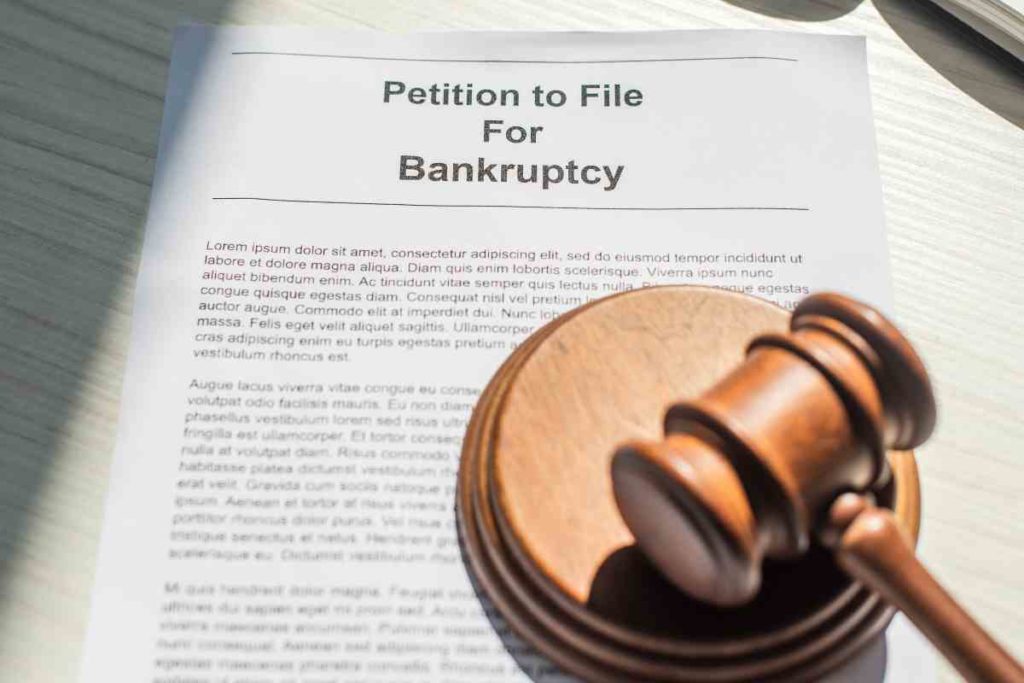Bankruptcy in America: Rights and Remedies

Bankruptcy in America: Rights and Remedies:- Bankruptcy, to many, signifies financial defeat. But in essence, it represents a legally sanctioned opportunity for individuals and entities to regain financial stability. One can make informed decisions during financial hardships by grasping the rights and remedies associated with bankruptcy in America.
2. The Roots of American Bankruptcy Laws
Historically, bankruptcy laws have always sought to balance the interests of debtors and creditors. Rooted in the U.S Constitution itself, the power to establish uniform bankruptcy laws was designed to ensure fairness in financial systems.
3. Chapter 7 Bankruptcy: Liquidation
The most common form of bankruptcy is Chapter 7. It involves the liquidation of the debtor’s non-exempt assets by a trustee, distributing the proceeds to creditors. This method wipes out most debts, giving the debtor a fresh start.
4. Chapter 11 Bankruptcy: Reorganization
Predominantly for businesses, Chapter 11 permits reorganization of debt. Companies can continue operations while restructuring their obligations, protecting the enterprise and its creditors’ interests.
5. Chapter 13 Bankruptcy: Repayment Plan
Chapter 13 is ideal for individuals with a regular income. Instead of liquidating assets, debtors propose a 3-5-year repayment plan, safeguarding their assets and providing a structured path to clear their dues.
6. Debtor’s Rights: A Closer Look
Every American has the right to file for bankruptcy. The automatic stay, an immediate injunction, stops creditors from collecting debts, ensuring that the debtor isn’t overwhelmed during proceedings.
7. Remedies for Creditors: Protections in Place
Bankruptcy doesn’t mean creditors are left in the lurch. They have remedies like proof of claim to ensure their voices are heard. Secured creditors also have the right to seize the collateral if a debtor defaults.
8. Exemptions: Shielding Personal Assets
Contrary to popular belief, filing for bankruptcy doesn’t strip away all personal belongings. Exemptions, varying by state, allow debtors to keep essential items, like a primary residence or vehicle, up to a certain value.
9. Discharge of Debts: The Ultimate Goal
The main advantage of filing for bankruptcy is the discharge of debts. This legal declaration ensures that debtors are no longer required to pay off specific unsecured debts, granting genuine financial freedom.
10. Consequences of Bankruptcy: The Other Side of the Coin
Though bankruptcy offers a fresh start, it isn’t without consequences. From impacting credit scores to potential job implications, weighing the benefits against the drawbacks is crucial.
11. The Role of Legal Counsel: Navigating the Maze
Hiring a seasoned bankruptcy attorney is paramount. They provide invaluable guidance, ensuring paperwork is accurate, rights are protected, and achieving the best possible outcome.
12. Myths and Misconceptions: Separating Fact from Fiction
Many myths surround bankruptcy, leading to unnecessary fear and hesitation. One common misconception is that one will lose everything they own. In reality, bankruptcy protections and exemptions often allow people to keep most of their possessions. Another myth is that bankruptcy ruins one’s credit for life. While it does have a significant impact initially, with responsible financial behaviour, one can rebuild their credit over time.
13. The Societal Stigma: Changing Perceptions
Over the years, bankruptcy has carried a societal stigma. However, as the global economy shifts and financial crises arise, it’s essential to understand that bankruptcy is not a reflection of personal failure but a legal remedy to insurmountable economic challenges. Financial literacy and awareness can help change these perceptions, encouraging a more compassionate view of those facing economic hardships.
Also, Read Family Law in America: The Intricacies of Divorce and Custody
14. The Emotional Toll: Beyond the Financials
Bankruptcy doesn’t just impact one’s finances. The emotional and psychological toll it can take on individuals and families is profound. Anxiety, stress, and feelings of guilt or embarrassment are common. It’s crucial to seek support through counselling, community groups, or family to navigate these emotional waters.
15. A Global Perspective: Bankruptcy Across Borders
While this article delves deep into American bankruptcy, it’s enlightening to understand how other countries approach the issue. For instance, in many European nations, the focus is more on rehabilitation than punishment, offering a range of solutions to help individuals and businesses get back on their feet.
16. Bankruptcy’s Impact on the Economy: A Macro View
Bankruptcy plays a pivotal role in the broader economy. Resources can be reallocated more efficiently by allowing businesses and individuals to reset their financial situations. This fluidity ensures that the economy can adapt and evolve, benefiting society at large.
17. Future of Bankruptcy: Evolving with Times
As financial systems grow more complex, bankruptcy laws and procedures will inevitably evolve. Technology, for instance, is already playing a role in streamlining bankruptcy filings, making it more accessible and efficient for both debtors and creditors.
18. Tips for Avoiding Bankruptcy: Proactive Measures
While bankruptcy provides a safety net, proactive financial planning can often avert the need for it. From building an emergency fund and seeking financial counselling to living within one’s means, several strategies can help ensure economic resilience.
19. Life After Bankruptcy: The Path Forward
A bankruptcy filing is not the end but a new beginning. One can rebuild and even thrive with the right mindset and financial strategies. Many individuals have emerged from bankruptcy stronger, wiser, and more financially savvy, proving that with determination and the right resources, there’s always a path forward.
20. Empowering Yourself: Knowledge is Power
The more one knows about bankruptcy, its rights, and remedies, the better equipped they are to make informed decisions. Taking the time to educate oneself, consulting with experts, and understanding one’s options can make a world of difference in both the short and long term.
Conclusion: The Road to Financial Recovery
Bankruptcy in America, though daunting, is a structured process built on centuries of legal precedence. By recognizing the rights and remedies it offers, individuals and businesses can harness its potential to overcome fiscal challenges and forge a path toward financial resurgence. Whether it’s safeguarding personal assets, restructuring business debts, or understanding the intricate maze of bankruptcy laws, the journey is about regaining control and reclaiming financial freedom.







